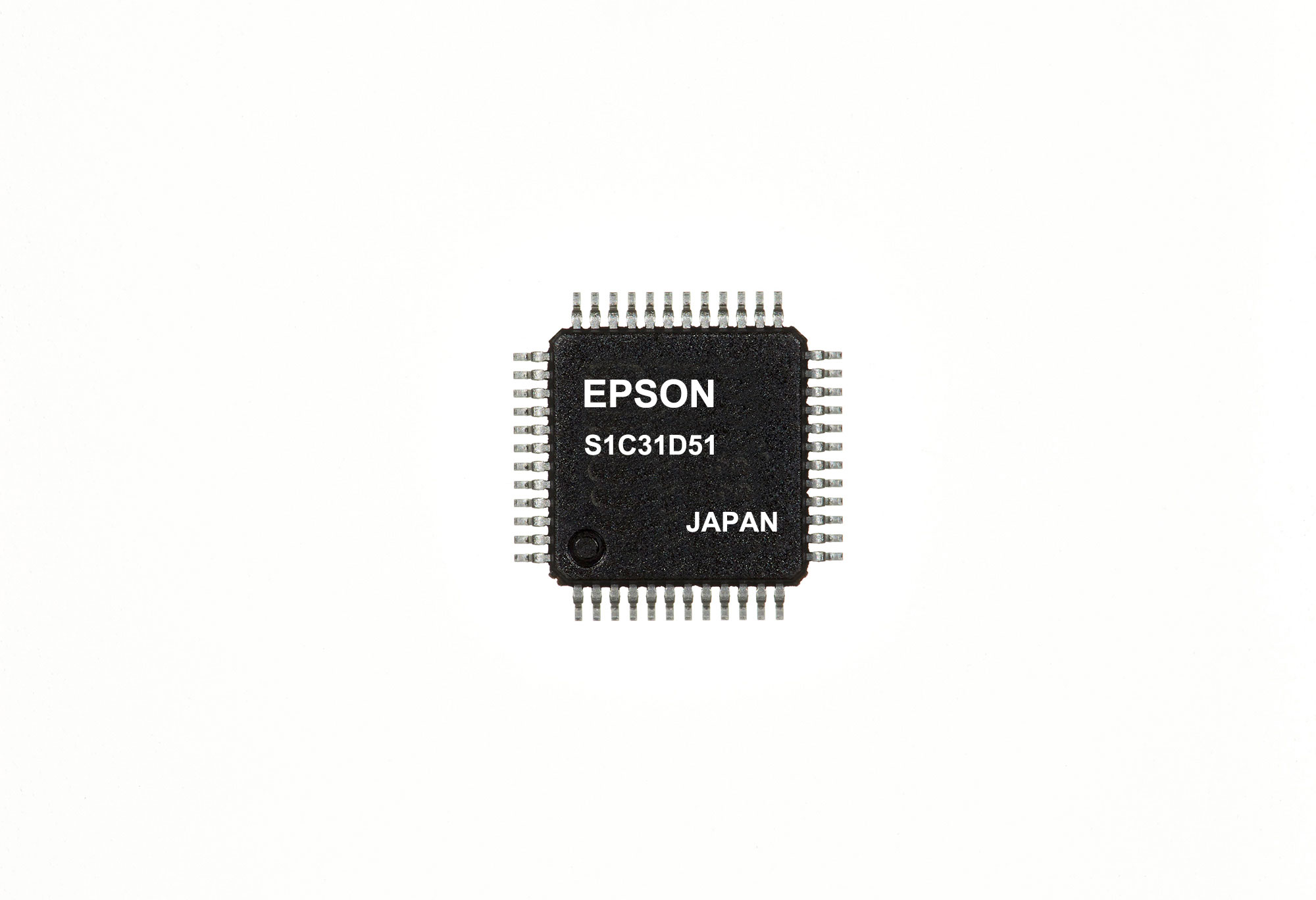S1C31D51 microcontroller with ARM® Cortex®-M0+ processor, the ideal sound solution for home appliances and electronics

An ARM® Cortex®-M0+ processor integrated with a dedicated HW Processor provides 2-channel sound on a single MCU chip. By making it possible to output voice guidance sound like error and warning messages on a buzzer instead of a speaker, the usability of the MCU is increased. Common buzzer sound output performance is often very poor because of low volume and limited bandwidth. Epson improved buzzer performance by using a combination of software and hardware support.
Sound is becoming an increasingly popular feature in home electronics, remote controllers for home appliances, industrial devices, health and fitness equipment with guidance systems, or alarms in office buildings, shopping complexes, and factories. This MCU is ideal for all these applications.
First, the HW processor plays sound without requiring CPU resources, so CPU resources can be allocated to other processes even during sound playback. The use of a high data compression algorithm(16 kbps @ 15.625 kHz) shrinks the size of sound data memory, making it possible to provide a large amount of sound data and sound data in multiple languages.
One big advantage of Epson`s Sound solutions for customers is its own Voice Creation PC Tool. This software tool will be provided free of charge to customers and is a simple development environment for easily creating sound data for 12 languages without studio recording. You can also use existing WAV data.
Second, the MCU has a self- memory check function that can detect failures in built-in RAM, built-in Flash, and external QSPI-Flash memories without using CPU resources.
Epson is committed to helping its customers improve the performance of their products with solutions that leverage Epson’s efficient, compact, and precision technologies.
| Product number | S1C31D51 |
| CPU core | CPU core ARM® Cortex®-M0+ 32-bit RISC processor |
| Flash memory | 192 kB (for both programs and sound data) |
| RAM | 10 kB (22 kB when not playing audio) |
| HW processor | Sound playback (original Epson format, 15.625 kHz sampling rate, 2-channel mixing, voice speed conversion) Self-memory check function (built-in Flash & RAM, external QSPI-Flash) |
| Sound DAC | Sampling rate: 15.625 kHz, mono |
| Serial interfaces | UART, SPI, and I2C: 3 channels each. QSPI: 1 channel |
| A/D converter | 8 inputs, max. (12-bit successive-approximation ADC) |
| Supply voltage detector | 32 level (1.7 V – 4.3 V) |
| DMA | 4 channels (memory ⇔ memory, memory ⇔ peripheral) |
| Resistor to Frequency Converter(RFC) | 1-channel, low-resistance sensor A-D conversion, CR oscillation with 24-bit counters |
| Infrared remote controller | 1 channel (can be used to generate EL lamp driving waveforms) |
| Timers | 16-bit timer (8 channels), 16-bit PWM (2 channels), watchdog timer (WDT), real-time clock (RTC) |
| Power supply voltage | Guaranteed operating range: 1.8 V – 5.5 V |
| SPI-Flash interface voltage | 3.3 V (3.0 V – 3.6 V) |
| Operating frequency | 16 MHz (VD1 voltage mode: mode 0) 1.8 MHz (VD1 voltage mode: mode 1) |
| Power consumption*2 | RUN: 243 uA/MHz (VD1 voltage mode: mode 0) RUN: 155 uA / 1 MHz (VD1 voltage mode: mode 1) SLEEP: 0.46 uA, RTC mode: 0.95 uA |
| I/O ports | Max. 91 Of which up to 32 may be universal port multiplexers (UPMUX) |
| Packages | P-TQFP048-0707-0.50 (pin pitch: 0.5 mm) P-LQFP064-1010-0.50 (pin pitch: 0.5 mm) P-TQFP080-1212-0.50 (pin pitch: 0.5 mm) P-LQFP100-1414-0.50 (pin pitch: 0.5 mm) |
*2 At typical environmental values, SLEEP mode, RTCA = On, 25 degrees Celsius
A variety of ways to play back sound
*1 S1C31D51 evaluation board includes the electromagnetic and piezoelectric buzzer by TDK Corporation that allows quick audio testing along with the preset demonstration.
ARM and Cortex are registered trademarks of ARM Limited (or its subsidiaries) in the US and other countries. All rights reserved.